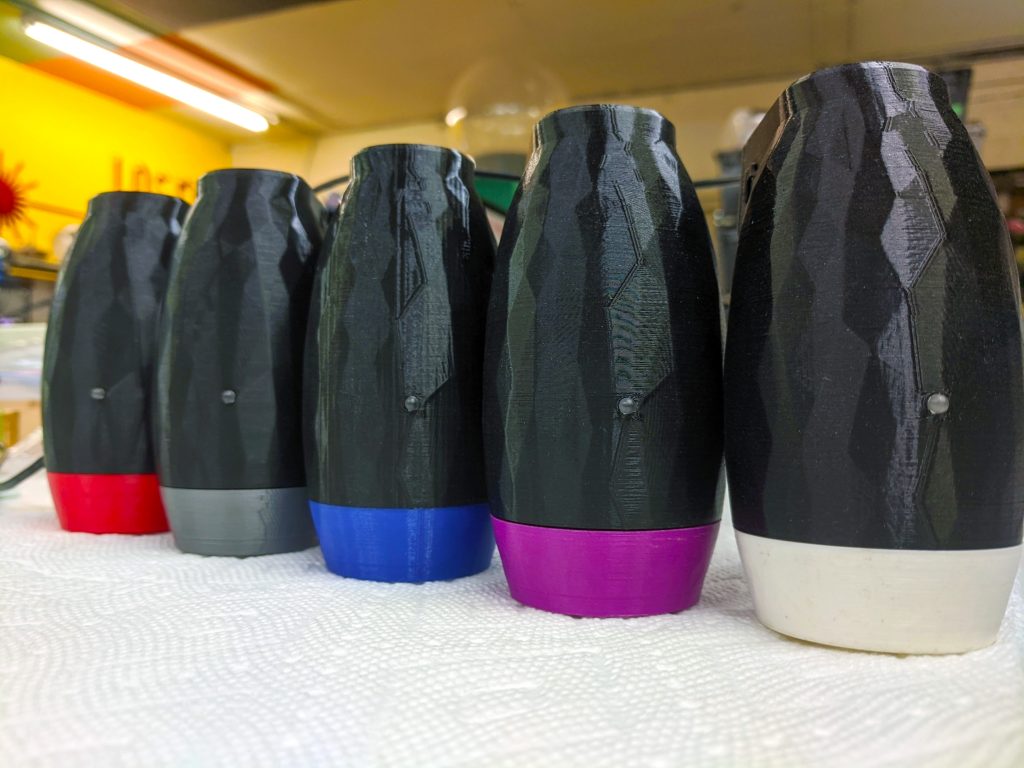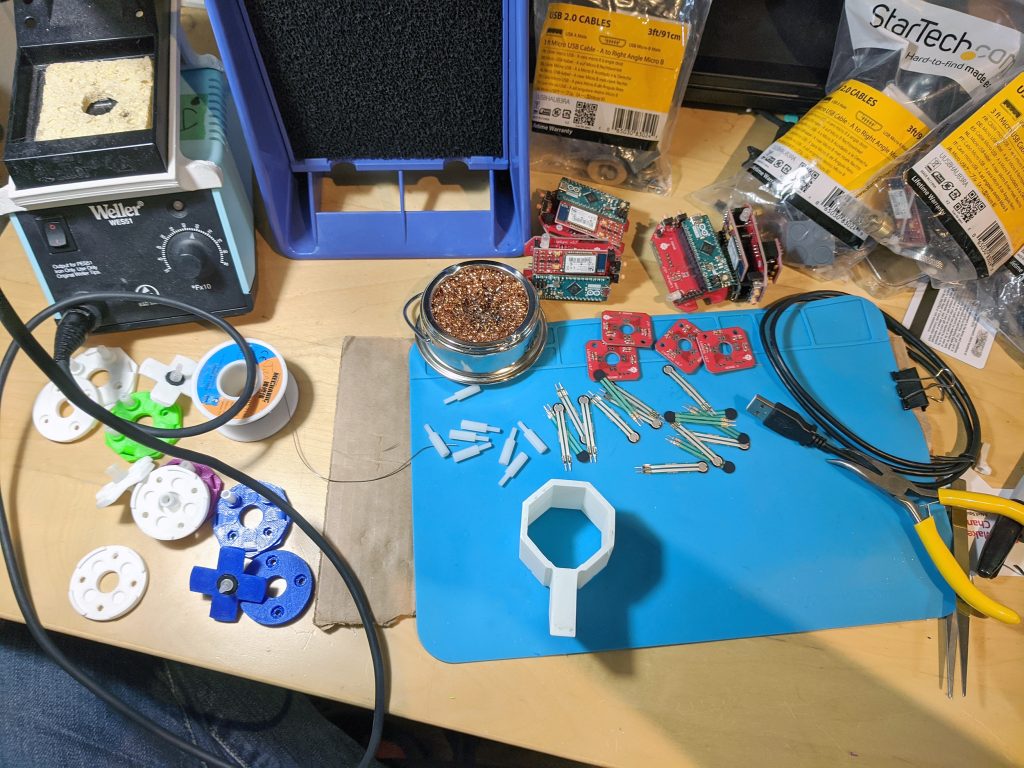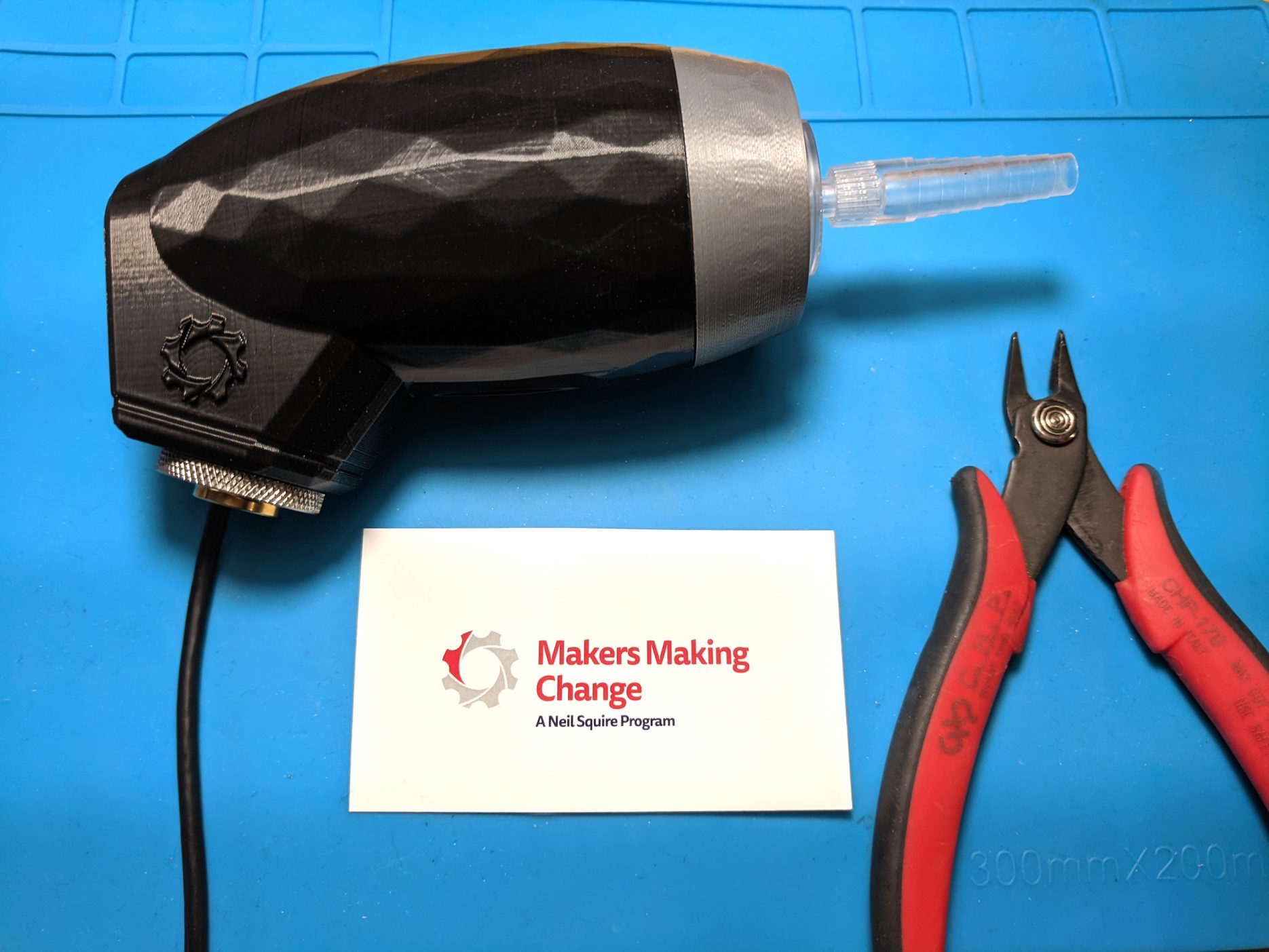Recently I built five mouth-operated joysticks for Makers Making Change (MMC). MMC is an innovative group that connects makers with opportunities to make assistive devices for people with disabilities.

Usually LipSyncs are made at community-build events but Covid put a stop to that. A group of us from the from the Vancouver Hack Space built over 30 devices. This was a fun build and a great way to help people. I look forward to more makes from the MMC open-source database.
What’s a LipSync?
The LipSync is a joystick controlled by mouth and requires minimal head movement. The joystick is moved up, down, left, and right by moving the lips. To mouse click, you sip or puff air into the device.
The Build
All of the LipSync components are contained in the 3-D printed head, making it very portable and usable by USB. The version I built also had a standalone bluetooth board for wireless setup. At the heart of the LipSync is an Arduino Nano board, a pressure sensor, and some force-sensitive resistors plus an assortment of 3D-printed mechanical parts. The build guide is excellent.

The Code
The device runs on a single Arduino C sketch which makes it easy to flash. It even has built-in calibration routines that can be easily run by an end user with no knowledge of programming.
Thoughts on Design
This is a wonderful design and the kit is a joy to build — perfect for making in groups at community events. The device works well, it’s durable, it’s repairable, and it’s very accessible to makers.
The device could be made smaller if designed for surface-mount diodes (SMD) but finding enough volunteers with the skills and patience to hand-solder an SMD is difficult.
Another option is to replace the brains of the device with an ESP8266 dev board like the NodeMCU. It’s got built-in wifi, bluetooth and runs Arduino C. A change like this would reduce costs but also require a redesign of the entire device. I’m sure there are also other design requirements that I’m not considering.
What’s Next?
I really enjoyed this project. Next I’ll be building this Proximity Switch. If you’d also like to build assistive devices check out the MMC website.
